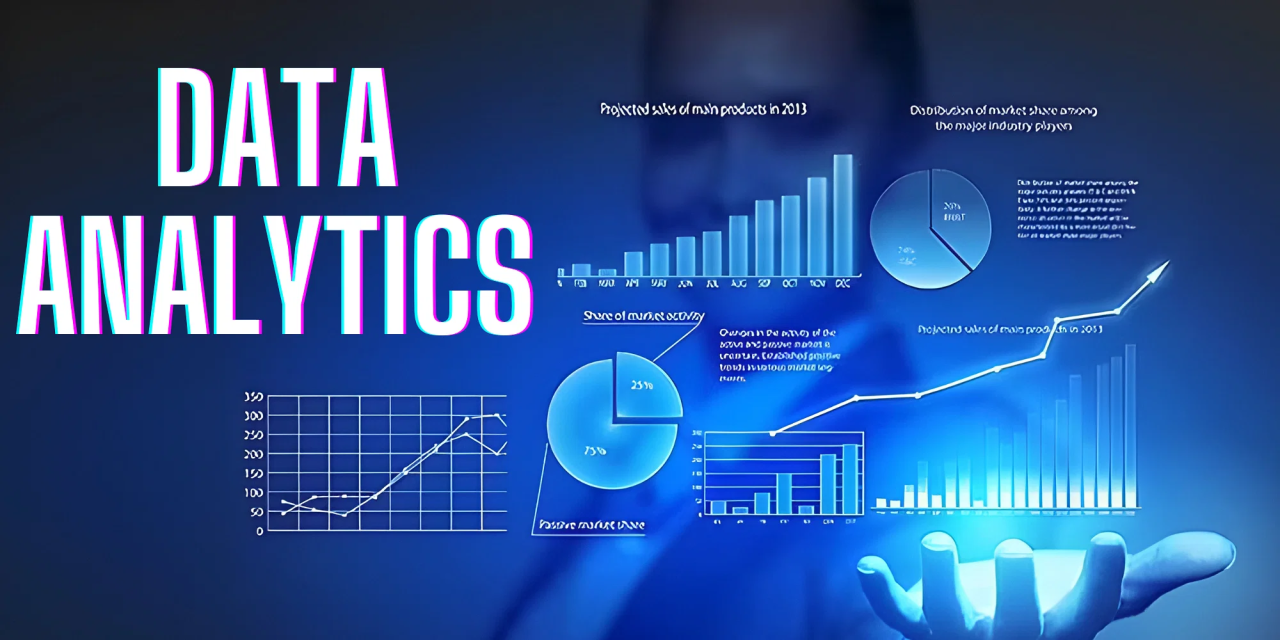Preventing Cyberattacks Using Data Analysis
Cyberattacks are a growing threat to individuals, businesses, and governments as the world becomes more digitised. The landscape of cyber threats constantly evolves from phishing scams to ransomware attacks. Preventing these attacks requires robust cybersecurity measures, and one of the most effective tools in this fight is data analysis. By analysing vast amounts of data, cybersecurity teams can identify patterns, anomalies, and vulnerabilities that may signal a potential cyberattack.
In this article, we’ll explore how data analysis is helping to prevent cyberattacks and why mastering this skill through a data analysis course in Pune is essential for anyone interested in cybersecurity.
Table of Contents
The Role of Data in Cybersecurity
In cybersecurity, data is everywhere. Every interaction, transaction, and operation leaves a digital footprint that can be analysed. From login attempts and file access to network traffic and user behaviour, this data holds valuable insights into a system’s security. Cybersecurity professionals use data analysis techniques to examine this data for signs of suspicious activity.
By taking a data analysis course in Pune, individuals can learn how to leverage data analysis tools to sift through huge amounts of information and detect potential threats before they materialise into full-fledged attacks.
How Cyberattacks Are Detected Through Data Analysis?
-
Identifying Anomalies
One primary way data analysis helps prevent cyberattacks is by identifying anomalies. An anomaly could be an unusual login time, an unexpected file download, or a spike in network traffic. Such irregularities often serve as red flags, signalling that a cyberattack might be underway or about to occur.
Cybersecurity teams can train systems to recognise normal behaviour patterns using machine learning algorithms. When deviations from these patterns occur, the system can flag them for further investigation. Learning how to set up these systems is a valuable skill taught in a data analyst course.
-
Predictive Analytics for Threat Forecasting
Predictive analytics is another powerful tool in the fight against cyberattacks. Predictive models can predict the likelihood of future attacks by analysing historical data on past cyberattacks. These models can predict when and where an attack will likely occur, enabling organisations to take proactive measures to strengthen their defences.
For instance, data analysis tools can monitor external threat intelligence feeds that track emerging cyber threats. By analysing this data, cybersecurity teams can anticipate new attack vectors and fortify their systems accordingly. Developing predictive analytics skills through a data analyst course can significantly enhance your ability to prevent cyberattacks.
Types of Cyberattacks Prevented with Data Analysis
-
Phishing Attacks
Phishing attacks are one of the most common forms of cyber threats. Attackers attempt to trick users into revealing private information through fake emails or websites. Data analysis helps identify phishing attempts by monitoring email traffic, spotting abnormal behaviour patterns, and scanning for known keywords.
ML models can also be trained to detect phishing emails in real time by analysing the language used in emails and comparing it to known phishing templates. These advanced techniques can be learned through a data analyst course, providing valuable insights into how to build robust anti-phishing systems.
-
Ransomware Attacks
Ransomware attacks occur when malicious software encrypts a user’s files, and attackers demand a ransom for the decryption key. Detecting ransomware attacks early is crucial for preventing data loss and financial damage. Data analysis can detect ransomware by analysing file access patterns and identifying abnormal file modifications.
For example, if many files are rapidly encrypted, data analysis tools can flag this behaviour as suspicious, prompting immediate action to stop the attack. Mastering these data analysis techniques can significantly minimise the risk of falling victim to ransomware, and this is precisely what a data analyst course offers.
-
Distributed Denial of Service (DDoS) Attacks
A DDoS attack occurs when multiple systems overflow the bandwidth or resources of a targeted system, making it unavailable to users. Data analysis is invaluable in mitigating DDoS attacks by monitoring real-time network traffic. By analysing traffic patterns, cybersecurity teams can quickly identify unusual spikes in traffic and block malicious requests before they overwhelm the system.
As cited in a data analyst course, implementing data-driven defences against DDoS attacks is a vital skill.
Machine Learning and AI in Cyberattack Prevention
Machine learning (ML) and artificial intelligence (AI) are increasingly used to enhance cybersecurity. These technologies depend heavily on data analysis to detect threats and respond to cyberattacks in real-time. By training AI models on large datasets of past cyberattacks, systems can automatically identify and neutralise threats without human intervention.
For example, AI can automate threat detection by continuously analysing network traffic, user behaviour, and system logs. The AI system can then take immediate action, such as blocking a suspicious IP address or isolating a compromised device from the network.
Understanding the intersection of machine learning and cybersecurity can greatly enhance your ability to prevent cyberattacks. This is why a data analysis course in Pune that covers AI and ML is invaluable for aspiring cybersecurity professionals.
Building a Data-Driven Cybersecurity Team
Organisations need a cybersecurity team that understands how to use data effectively to stay ahead of cyber threats. Building a data-driven cybersecurity team requires individuals proficient in cybersecurity principles and data analysis techniques. These professionals must know how to collect, process, and interpret data to identify potential threats.
Investing in training through a data analysis course in Pune can help build such a team. The course provides the foundational knowledge to use data to effectively detect, prevent, and respond to cyberattacks.
Best Practices for Using Data Analysis in Cybersecurity
Here are some best practices for integrating data analysis into your cybersecurity strategy:
- Continuous Monitoring: Implement real-time monitoring systems that analyse data 24/7 to detect threats as they happen.
- Regularly Update Algorithms: Cyber threats evolve, so periodically updating your data analysis models and algorithms is essential to keeping up with new attacks.
- Data Encryption: Encrypt all data used for analysis to prevent cybercriminals from intercepting it.
- Collaboration Between Teams: Encourage collaboration between data analysts and cybersecurity experts to ensure that insights gained from data analysis are effectively implemented in cybersecurity strategies.
By mastering these best practices, individuals can become more proficient in using data to prevent cyberattacks. These skills can be developed through a data analytics course.
Conclusion
Data analysis is one of the most powerful weapons in the battle against cybercrime. Organisations can protect themselves from cyberattacks by identifying anomalies, predicting threats, and implementing machine learning models.
Whether you’re an aspiring cybersecurity professional or a business leader looking to strengthen your organisation’s defences, understanding how to use data analysis in cybersecurity is crucial. Gaining these skills through a data analysis course in Pune can be your first step toward a more secure digital future.
Mastering data analysis will help prevent cyberattacks and position you as an invaluable asset in today’s increasingly digital world.
Business Name: ExcelR R Data Science, Data Analyst Course Training
Address: 1st Floor, East Court Phoenix Market City, F-02, Clover Park, Viman Nagar, Pune, Maharashtra 4014
Phone Number: 096997 53213
Email Id: enquiry@excelr.com

